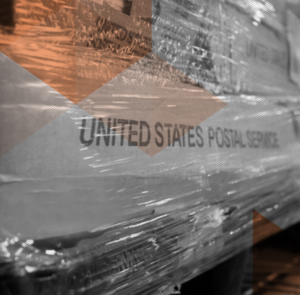 Over the past few years, news organizations, political pundits, politicians and experts from a variety of industries have put the United States Postal Service under intense scrutiny, desperately seeking ways to fix a system that was once the pride and joy of the U.S. government.
Over the past few years, news organizations, political pundits, politicians and experts from a variety of industries have put the United States Postal Service under intense scrutiny, desperately seeking ways to fix a system that was once the pride and joy of the U.S. government.
Even after the dust has settled from all the political banter, wild accusations and egregious hyperbole, not one person has been able to formulate and implement a sustainable solution that is capable of correcting the path of the government-run agency.
But the hole is not so deep
How exactly did one of the first institutions put into place by the original draft of the U.S. Constitution fall into such a situation? The answer lies in a single key factor: prefunding pensions. The USPS is required by law enacted by the Congress to pre-fund its pension program, and is currently the only government agency that is required to do so. This has forced the USPS to fund future purchases with revenue that it has yet to accrue.
Despite this strapping debt, the postal service has still managed to operate on a $1.2 billion operational profit, and 2015 was the second year in a row that profit was made.
This is an incredibly good sign for an agency that, according to Bloomberg Business, is expected to carry mail via pack mule to the bottom of the Grand Canyon, via snowmobile to the wilds of Alaska and to every corner of the country, places that UPS and FedEx refuse to even entertain the idea of servicing.
The defining problem
In taking a step back from the often one-sided arguments, the future of the USPS is not as bad as many people claim it to be. When taking a non-biased look at the situation, the troubles of the USPS can all be rooted in the unfunded liabilities that have plagued the agency for years.
According to the latest report by the Government Accountability Office (GAO), the USPS
was required to make $12.6 billion in retiree health and pension payments, but it only made $6.7 billion. Just shy of half the required payments.
In all, the USPS currently has $125 billion in unfunded liabilities, most of which are made up of retiree health and pension benefits. This amount is equal to 182 percent of the USPS’s average annual revenue.
Because of these liabilities, the USPS is on an unsustainable path that is likely to place the burden of its debts on US taxpayers. If this single underlying problem is fixed, the woes of the USPS can be drastically reduced.
Climbing Out
It may seem like a long and arduous path, but the USPS can climb out of the hole in which they find themselves. From more efficient route planning that decreases costs to implementing a lean warehouse culture, the USPS can learn a lot from privatized shipping companies, third party logistics providers and other supply chain entities.
For an institution that will ship a piece of mail to anywhere in the US for $0.49, the USPS is something that is worth saving, but they have to be willing to drastically change their strategies in order to pull themselves out of their current predicament.
At King Solutions, we know the importance of efficiency, cost and sustainability for our partners. That’s why we always employ the best practices when it comes to the supply chain. To learn more about what we do for our partners, contact us today.







 Joel Rice
Joel Rice